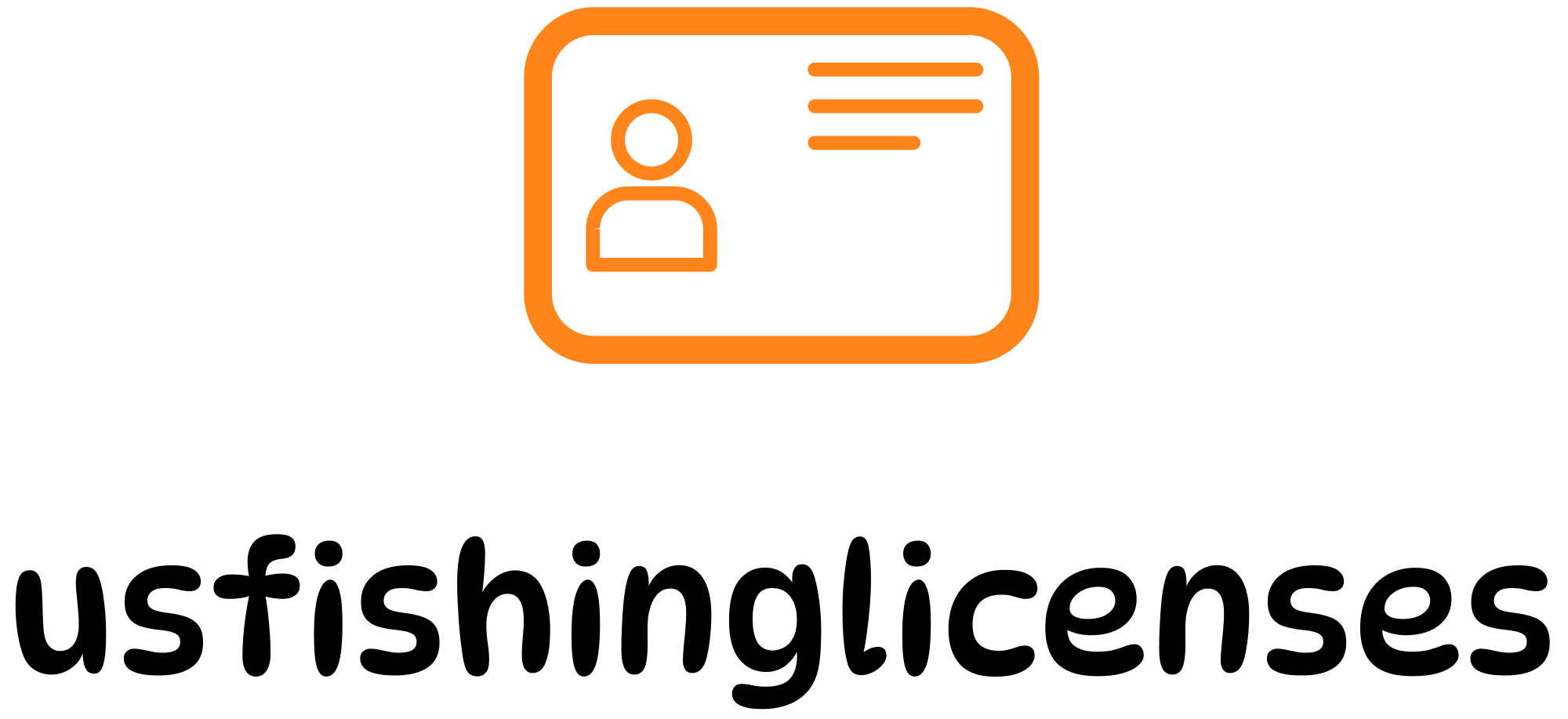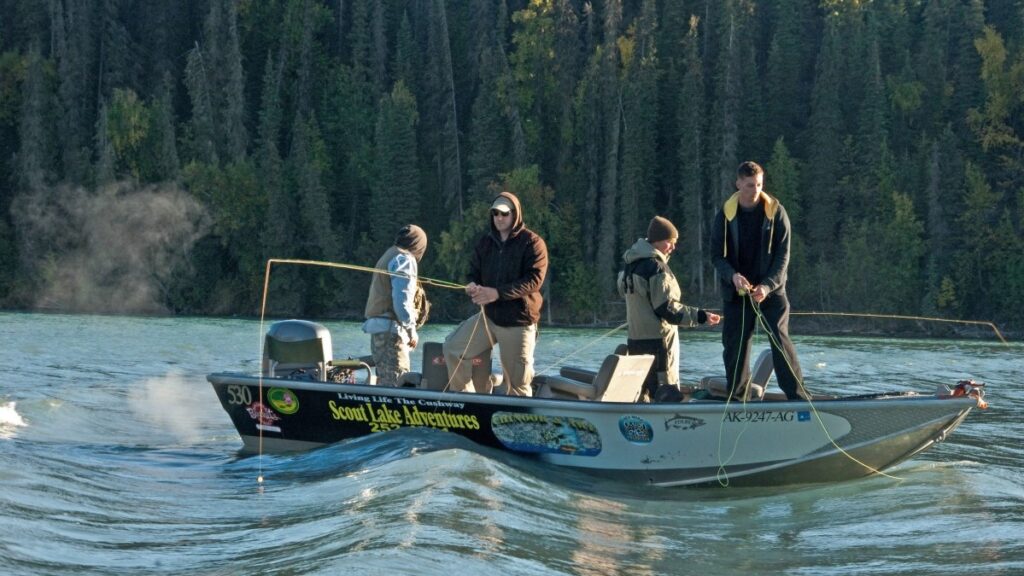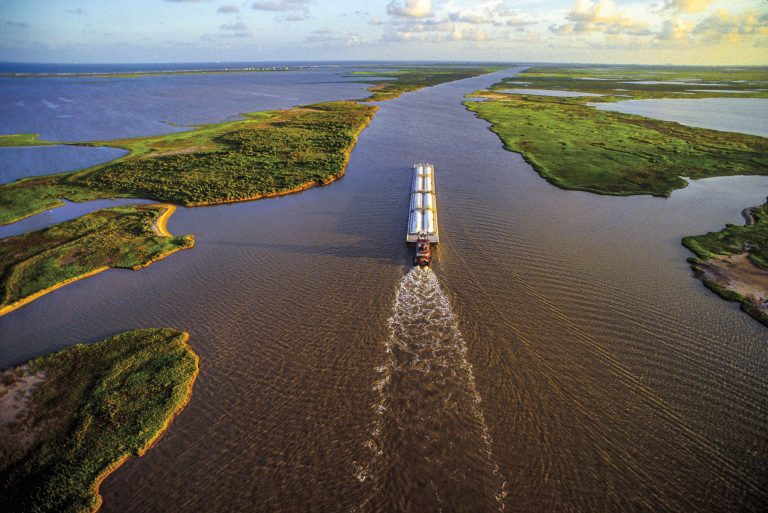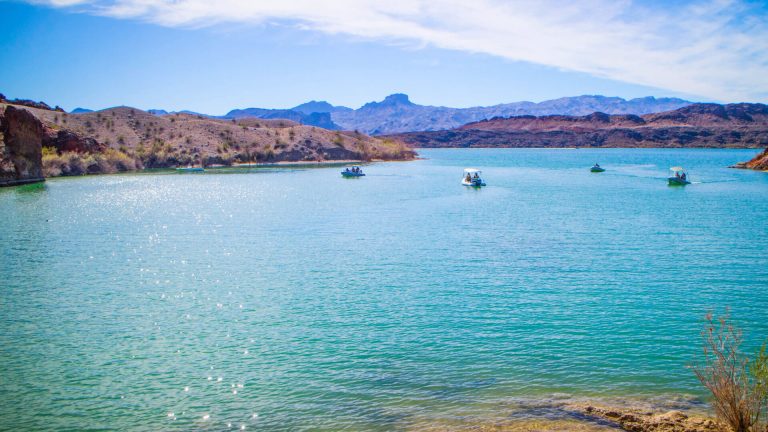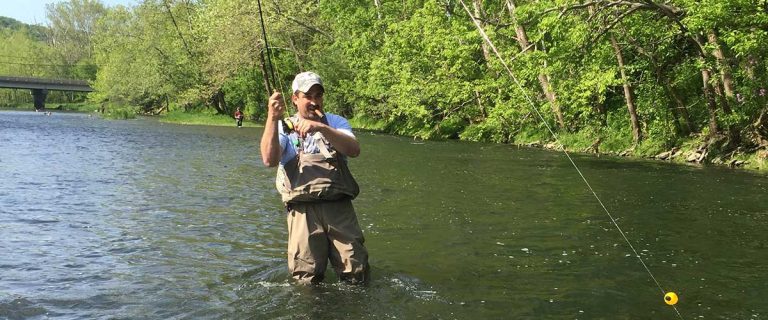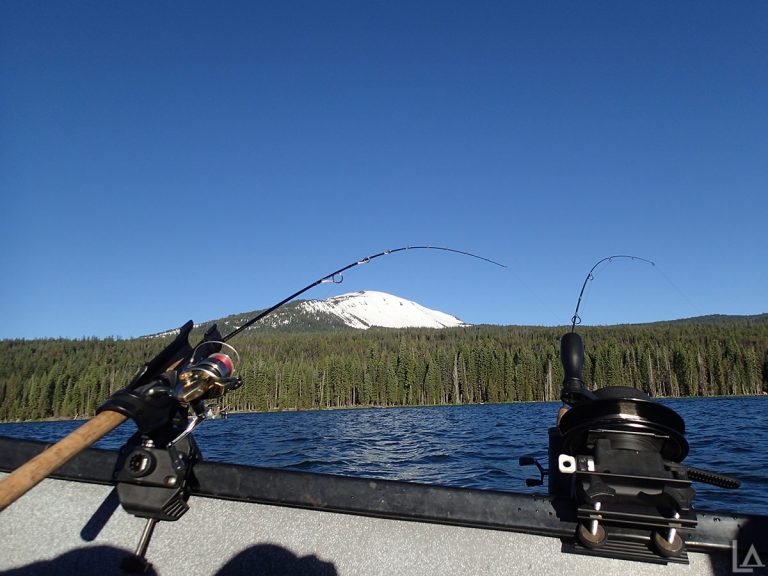Alaska is celebrated for its pristine waters and abundant fish populations, making it a premier destination for fishing enthusiasts. Before you cast your line, it’s essential to navigate the process of obtaining an Alaska fishing license. This guide provides crucial insights into the various types of fishing licenses available in Alaska for the 2025 season, including:
- Resident Licenses
- Non-Resident Licenses
- Short-Term Licenses
Additionally, you’ll find information on costs and purchasing methods to ensure you’re well-prepared for your fishing adventure.
Understanding Alaska Fishing Licenses
Fishing licenses in Alaska are essential for anyone aged 16 years or older who wishes to fish in the state’s abundant waters. Managed by the Alaska Department of Fish and Game (ADF&G), these licenses ensure that fishing activities contribute to the sustainability of aquatic ecosystems. Notably, there are exceptions: residents under 18 and non-residents under 16 may not require a license but must have a free Harvest Record Card to document their catches. The revenue generated from these licenses is crucial for funding conservation efforts that protect Alaska’s unique wildlife and habitats.

For comprehensive and up-to-date information regarding fishing licenses, including application procedures and regulations, visit the ADF&G Licenses & Permits page.
Types of Alaska Fishing Licenses
Alaska offers a variety of fishing licenses to meet diverse needs:
- Sport Licenses: Required for most recreational fishing activities; available for residents and non-residents.
- Personal Use Licenses: Exclusive to residents for harvesting fish for personal consumption.
- Subsistence Licenses: Available only to residents for traditional fishing practices.
- Commercial Licenses: Required for those intending to sell their catch.
Each license type comes with specific requirements and pricing structures. For example, a sport fishing license costs approximately $20 annually for residents and ranges from $15 for a one-day pass to $100 annually for non-residents. Understanding these categories will help you select the appropriate license for your fishing endeavors.
Resident Fishing Licenses
To qualify for a resident fishing license in Alaska, you must demonstrate that you have lived in the state for at least 12 consecutive months prior to purchasing the license. This residency requirement ensures that local anglers benefit from lower fees compared to non-residents.
Resident License Costs for 2025
The costs for resident fishing licenses in Alaska are significantly lower than those for non-residents, making fishing more accessible to locals. Here’s a breakdown of the 2025 costs:
- Annual Sport Fishing License: $29
- Annual Sport Fishing and Hunting License: $60
- Annual Sport Fishing, Hunting, and Trapping License: $85
- Annual Low-Income Sport Fishing License: $5
- Annual Sport Fishing License for the Blind: $0.50
Residents under 18 years old do not need a fishing license; however, they must obtain a free Sport Fishing Harvest Record Card when fishing for species with annual limits, such as King Salmon or Halibut. Additionally, all anglers aged 16 years and older must possess a valid fishing license when fishing in Alaska’s waters.
For comprehensive information on resident licenses, eligibility requirements, and regulations—including details on King Salmon stamps—please visit the Alaska Department of Fish and Game (ADF&G) Resident Fishing page here.
Non-Resident Fishing Licenses
For visitors eager to fish in Alaska, the state offers a variety of fishing license options tailored to different needs, including both short-term and annual permits. Non-resident licenses remain valid from the date of purchase until the expiration date specified on the license. This flexibility allows anglers to enjoy Alaska’s rich fishing opportunities without long-term commitments.
Non-Resident License Costs for 2025
The cost of non-resident fishing licenses in Alaska varies based on the duration of the permit. Here’s a breakdown of the fees for 2025:
- 1-Day Sport Fishing License: $15
- 3-Day Sport Fishing License: $30
- 7-Day Sport Fishing License: $45
- 14-Day Sport Fishing License: $75
- Annual Sport Fishing License: $100
It’s important to note that non-resident children under 16 are exempt from needing a fishing license. However, they must obtain a Sport Fishing Harvest Record Card when targeting species with annual limits, ensuring compliance with state regulations.
Additionally, if you plan to fish for King Salmon, you will need to purchase a King Salmon Stamp, which costs $15 per day or $100 annually.
For comprehensive details on non-resident licenses and to access application forms, visit the Alaska Department of Fish and Game (ADF&G) Non-Resident Fishing page. This resource provides essential information on purchasing licenses online or at local vendors, helping streamline your fishing license application process.
Special Group Fishing Licenses
Military Licenses
Active-duty members of the U.S. military stationed in Alaska can take advantage of discounted fishing licenses. To qualify for these benefits, you must provide your military ID along with proof of Alaska residency at the time of purchase.
- Annual Military Sport Fishing License: $20
- Annual Military Sport Fishing and Hunting License: $60
Additionally, non-resident active-duty military personnel stationed in Alaska can purchase a fishing license at the resident rate of $20, significantly lower than the standard non-resident fee of $145. This initiative supports our service members while encouraging them to enjoy Alaska’s rich fishing opportunities.
Senior Licenses
Alaska residents who are 60 years or older are eligible for discounted senior fishing licenses. To obtain this discount, proof of age and Alaska residency must be presented during the purchase process.
- Annual Senior Sport Fishing License: $10
- Annual Senior Sport Fishing and Hunting License: $35
Furthermore, seniors can obtain a permanent identification card that allows them to fish without needing to purchase a sport fishing license or king salmon stamp. This makes it easier for seniors to engage in fishing activities, promoting outdoor recreation among older residents.
Disabled Veteran Licenses
Alaska offers a free sport fishing license to resident disabled veterans with a service-connected disability rating of 50% or more. Proof of disability must be provided at the time of application.
For comprehensive details on special group licenses, including eligibility requirements and application procedures, visit the Alaska Department of Fish and Game (ADF&G) Special Licenses page.
King Salmon Stamp Requirement
If you plan to fish for King Salmon in Alaska, obtaining a King Salmon stamp is mandatory in addition to your fishing license. This requirement applies to both residents and non-residents, ensuring that all anglers contribute to the management and sustainability of this prized species. Notably, residents under 18 years old and non-residents under 16 do not need a King Salmon stamp when fishing for this species.
King Salmon Stamp Costs for 2025
The following are the costs associated with the King Salmon stamp for 2025:
- Resident Annual King Salmon Stamp: $10
- Non-Resident 1-Day King Salmon Stamp: $15
- Non-Resident 3-Day King Salmon Stamp: $30
- Non-Resident 7-Day King Salmon Stamp: $45
- Non-Resident 14-Day King Salmon Stamp: $75
- Non-Resident Annual King Salmon Stamp: $100
How and Where to Purchase
Sport fish licenses and King Salmon stamps can be conveniently purchased online through the Alaska Department of Fish and Game (ADF&G) website, at most sporting goods stores, or at local Fish and Game offices.
Additional Requirements
To participate in sport fisheries with annual harvest limits (including many King Salmon fisheries), resident anglers younger than 18, non-resident anglers younger than 16, as well as resident senior citizens and disabled veterans holding an ADF&G Identification Card must obtain a free Sport Fishing Harvest Record Card. This card is necessary for recording their harvests and can be obtained online or at license vendors.
For more detailed regulations regarding King Salmon stamps and fishing practices, please visit the ADF&G King Salmon page.
How to Purchase an Alaska Fishing License
Obtaining an Alaska fishing license is a straightforward process that can be completed through several convenient methods. Here’s a comprehensive guide to help you navigate your options effectively.

Online Purchase:
The easiest way to acquire your fishing license is through the Alaska Department of Fish and Game (ADF&G) Online Store. This option allows you to purchase and print your license immediately, making it the most convenient choice for many anglers. When purchasing online, you may want to create a myADF&G profile for quicker future transactions. For more details, visit ADF&G Licenses & Permits.
In-Person Purchase:
If you prefer a face-to-face transaction, you can buy licenses at various local sporting goods stores, ADF&G offices, and other authorized vendors throughout Alaska. For a complete list of vendors, visit ADF&G License Vendors.
By Phone:
For those who prefer to handle things over the phone, you can call the ADF&G licensing office at (907) 465-2376 to purchase your license directly.
When applying for a fishing license, be prepared to provide personal information such as your name, address, and date of birth. If you’re applying for a resident license, proof of residency may also be required.
License Costs:
- Resident annual fishing license: approximately $29
- Non-resident annual fishing license: approximately $100
- King Salmon Stamp (required for both residents and non-residents targeting king salmon): approximately $10
Always check with the ADF&G website for the most current pricing and regulations before heading out on your fishing adventure.
Conservation and License Fees
Understanding the significance of fishing license fees is essential for every angler. These fees are not merely a cost; they are vital for funding crucial conservation initiatives that support sustainable fisheries management in Alaska. The revenues generated support:
- Fish habitat restoration projects
- Population surveys and research
- Stocking programs to maintain fish populations
- Improvements to public access areas
- Education and outreach programs that promote sustainable practices
By purchasing a fishing license, you are directly contributing to the preservation and enhancement of Alaska’s fisheries, ensuring their viability for future generations. This investment not only supports local ecosystems but also enriches the fishing experience for all. For more detailed information on license types—such as Sport, Personal Use, Subsistence, and Commercial—visit the Alaska Department of Fish and Game (ADF&G) website.
Fishing Regulations and Limits
While obtaining a valid fishing license is a fundamental step, it is equally important to familiarize yourself with Alaska’s fishing regulations. These rules are designed to promote sustainable fishing practices and may include:
- Daily and annual catch limits
- Size restrictions on certain species
- Seasonal closures to protect spawning fish
- Gear restrictions to minimize environmental impact
Regulations can vary significantly by species and location; therefore, it is crucial to check the current ADF&G Fishing Regulations before embarking on your fishing trip. Staying informed ensures that you fish responsibly while enjoying the rich natural resources Alaska has to offer.
Tips for a Successful Alaskan Fishing Experience
To maximize your enjoyment while fishing in Alaska, consider these practical tips:
- Plan Ahead: Purchase your fishing license well in advance of your trip through the ADF&G online store.
- Stay Informed: Regularly check fishing reports and updates on regulations to adapt your plans accordingly.
- Respect the Environment: Whenever possible, practice catch-and-release techniques and adhere to Leave No Trace principles to protect natural habitats.
- Safety First: Always wear a life jacket and prepare for Alaska’s unpredictable weather conditions.
- Hire a Guide: If you’re new to Alaskan waters, hiring a local fishing guide can enhance your experience by providing insider knowledge and expertise.
Conclusion
Obtaining an Alaska fishing license is a straightforward process that is essential for anyone planning to fish in the state’s bountiful waters. Whether you’re a resident or a visitor, there are options to suit your needs and duration of stay. By purchasing a license, you’re not only complying with state regulations but also contributing to the conservation of Alaska’s incredible fisheries.
Remember to always fish responsibly, follow local regulations, and enjoy the unparalleled beauty and abundance of Alaska’s waters. With your license in hand and respect for the environment, you’re set for an unforgettable Alaskan fishing adventure in 2025 and beyond.
For the most up-to-date information on licensing, regulations, and fishing opportunities, visit the official Alaska Department of Fish and Game website. Tight lines and happy fishing in the Last Frontier!
Can I fish without a license if I’m accompanying a licensed angler?
No, all anglers aged 16 and older must have their own valid fishing license, even if they are fishing with a licensed angler.
Do I need a separate license for saltwater and freshwater fishing?
No, an Alaska sport fishing license covers both saltwater and freshwater fishing throughout the state.
How long is my fishing license valid?
Most licenses are valid from the date of purchase through December 31st of the same year. However, short-term non-resident licenses are valid for the specified number of days (1, 3, 7, or 14) from the date of purchase.
What happens if I lose my fishing license?
If you lose your license, you can obtain a duplicate for a fee of $5. You can request a duplicate online through your ADF&G account or visit an ADF&G office or license vendor.
Do I need any additional permits or stamps besides my fishing license?
In most cases, a sport fishing license and a king salmon stamp (if targeting king salmon) are sufficient. However, certain areas or species may require additional permits, such as the McNeil River Bear Viewing Permit or the Kenai River Coho Salmon Permit. Always check the regulations for the specific area and species you plan to fish.
Can I fish without a license in Alaska?
Generally, no. All anglers 16 years and older (non-residents) and 18 years and older (residents) must have a valid fishing license. Some exceptions apply for certain groups and during special events like Free Fishing Days.
How long is an Alaska fishing license valid?
For residents, most licenses are valid until December 31st of the calendar year. Non-resident licenses are valid for the duration specified at purchase (1-day, 3-day, 7-day, 14-day, or annual).
Do I need a separate license for saltwater and freshwater fishing?
No, Alaska fishing licenses cover both saltwater and freshwater fishing. However, additional stamps or permits may be required for certain species or areas.
Can I get a refund if I don’t use my fishing license?
Generally, fishing licenses are non-refundable. It’s best to purchase your license close to when you plan to use it.
Are there any free fishing days in Alaska?
Yes, Alaska typically offers free fishing days in June, where residents and non-residents can fish without a license. Check the ADF&G website for specific dates each year.
